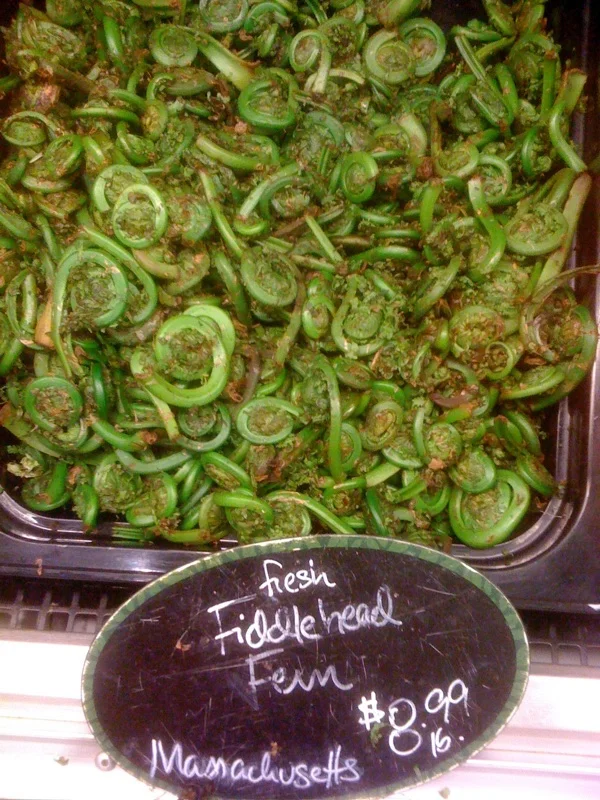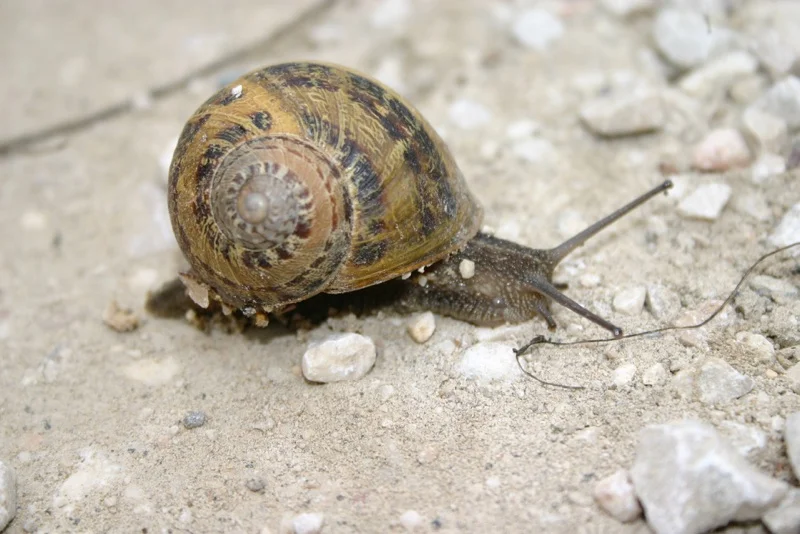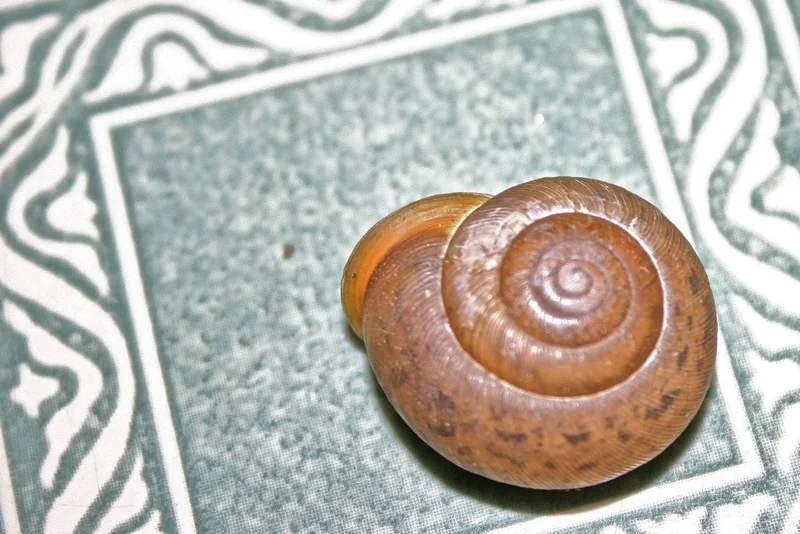Oh Fiddleheads!
Spotted these Fiddlehead Ferns in the supermarket recently. Such a lovely example of the Fibonacci spiral. These were imported all the way from...Massachusetts. At $8.99 a pound, they are pricey, but oh so tasty with butter!
Nature's Traveling Spiral
A great question to ask kids: “What would happen if snails didn’t have spiral-shaped shells?” Remember: Spirals are nature’s way of growing compactly, of keeping a uniform, manageable shape even as the living object continues to grow. If a snail’s shell didn’t coil into a Fibonacci spiral as the snail grew, the little critter would end up dragging something resembling a long, ungainly horn after him, instead of the quite elegant dwelling it possesses!
My wife snapped this little fellow a few years ago while we were living abroad, so he is actually an Italian snail, or “chiocciola.” (Say “KEY-oh-cho-la”).
Interestingly, the Italians use the same word, chiocciola, to describe the typographical symbol at the heart of every e-mail address: @
Can you guess why?
Spirals You Carry With You
Make a fist. Ta-da! You just made a spiral. That’s right; your fingers curl up into a lovely spiral every time you clench your fist. And you carry two other spirals on either side of your head: your ears!
Fun activity for kids: Take photos of their ears and fists, print them out, and have them use a pencil to trace the spiral shape right on the photo.
Small Is Beautiful
This little guy fell out of some herbs we harvested. You can’t tell it from the photo, but he’s less than an inch long. Yet his spiral is so beautifully formed and the close-up photo on the blog shows a perfect set of ridges etched into his shell. Gorgeous! I doubt that his shape conforms to the mathematical requirements of a Fibonacci spiral. But who cares?
Green, Peppery Math
Dinner the other night called for two green peppers, which revealed Fibonacci numbers upon closer inspection. Notice: Whether you’re looking at them from the top or bottom, you can easily pick out their three- and five-lobed shapes. I have spotted four-lobed peppers, too, but they don’t strike me as being as common as the threes and fives. If I come across one, I’ll be sure to post it.














